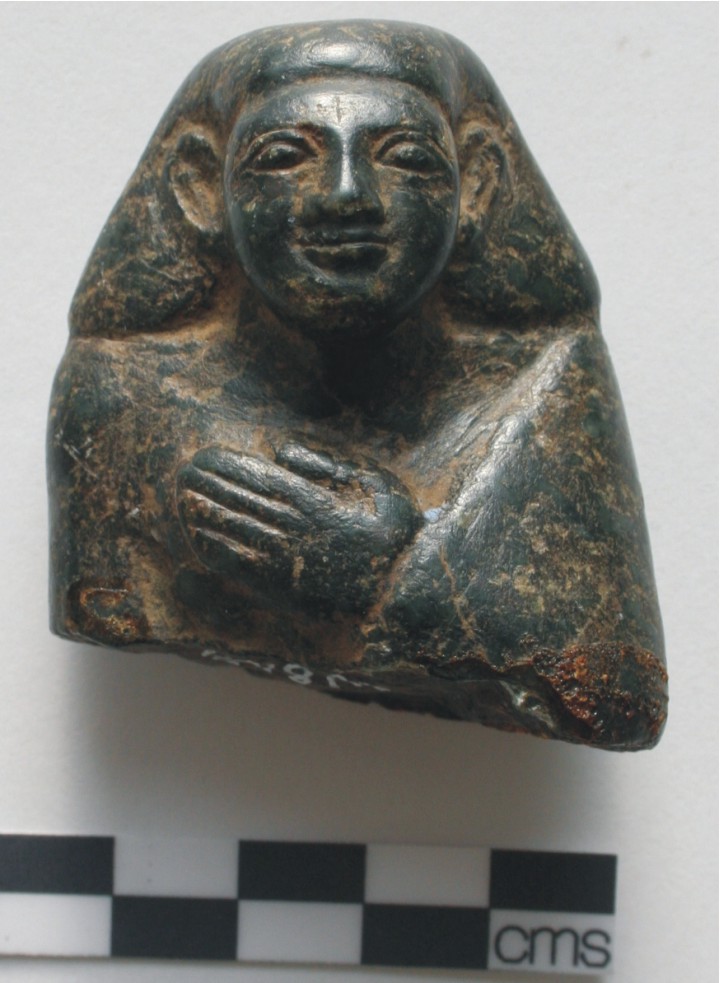W845

Upper part of a statue of a cloaked man in steatite. Sir Henry Wellcome purchased this item at a sale of Rustafjaell items on 19th-20th December 1906, lot 219.
Standing or seated cloaked figures were manufactured in the Middle Kingdom. They are sometimes compared to the Old Kingdom figures of the cloaked king in heb-sed scenes, or said to suggest an Osirian link. Cloaked statues were made throughout the Middle Kingdom then went out of use at end of 18th Dynasty. The large ears are typical of this period and it may be this is intended to show an official who listens. The large wig might suggest a 13th Dynasty date.
Unlike block statues, figures such as these were placed in temples rather than tombs (Russmann 2001, 100). Devotees placed statues in temples to represent themselves worshipping gods.
While this item would not have belonged to the lowest strata of society, it would not have belonged to a noble. Lower classes tended to use soft stones like steatite for their sculptures, whereas nobles would have used hard stone like granodiorite.
This item is published in Malek et al (1999, 418, no. 801-445-585).
See also W639 for cloaked figures
Further reading
Bourriau, J. 1988. Pharaohs and Mortals. Egyptian Art in the Middle Kingdom. Cambridge: Cambridge University Press.
Malek, J., Magee, D. and Miles, E. 1999. Topographical Bibliography of Ancient Egyptian Hieroglyphic Texts, Statues, Reliefs and Paintings, VIII, Objects of Provenance Not Known, Part 1. Royal Statues. Private Statues (Predynastic to Dynasty XVII). Oxford: Griffith Institute.
Russmann, E.R. 2001. Eternal Egypt. Masterworks of Ancient Egyptian Art from the British Museum. London: British Museum Press.